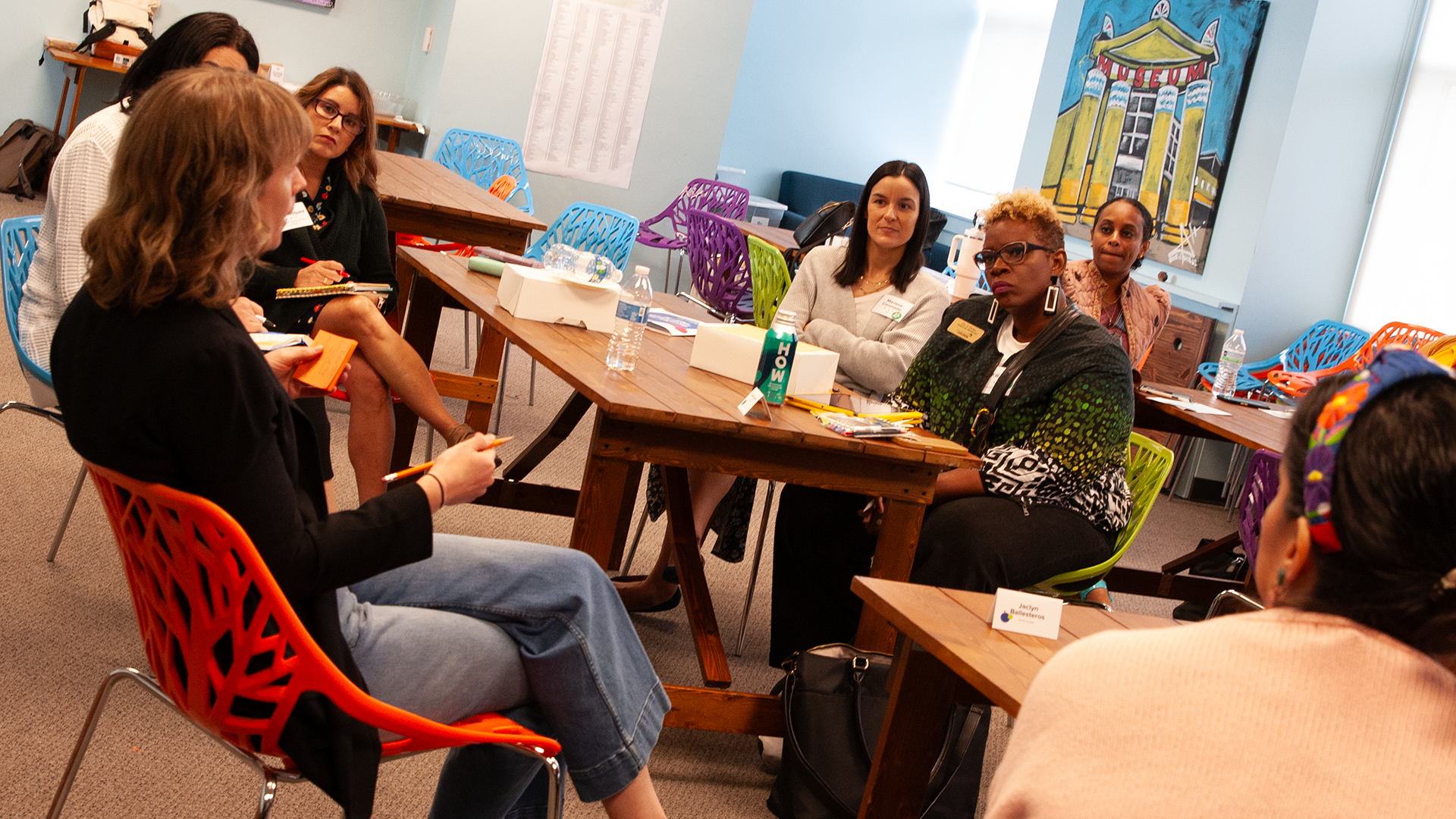How facilitation leads to more thoughtful teams and gatherings.
It’s 3:33 pm on a Thursday. You’re six hours and thirty-three minutes into this year’s strategic planning retreat. Not that you’re counting.
But somehow, a few people never got to speak up. Others dominated the conversation with non-sequiturs. Your manager, who led today’s conversations, looks dead behind the eyes. And nobody knows how to move forward.
For conversations to lead somewhere, someone has to lead the conversation. At Franklin Street Studio, we’re often asked to support teams to design and facilitate their most important experiences. A lot of factors go into developing action-oriented convenings, critical board retreats, and strategic team meetings. And a key part of making those gatherings effective is effective facilitation.
What is facilitation?
To us, facilitation is the art and craft of creating the conditions for a group to engage in a rigorous, meaningful conversation that advances their goals. By extension, a facilitator enables others to do their best thinking and work together.
They do that by making key decisions before and during the conversation itself, such as:
- Setting the tone: Will it be inclusive? Will it be engaging or boring? Intense or lighthearted?
- Understanding the participants: Who will be there? What are the power dynamics or prior relationships like?
- Setting the structure: Is the conversation a free-for-all or is there a specific approach to guide discussion?
- Adapting in real time: How can the conversation shift to respond to the emergent needs of the group?
Center the discussion without taking center stage
Facilitators should embrace their role in shaping the conversation. But they should be just as careful to avoid falling into certain other roles.
- Not stars: A facilitator isn’t the “sage on the stage” or the subject expert. If they’re dominating the conversation, they’re in the wrong role.
- Not decision-makers: Facilitators shouldn’t hold the most authority in the room1. Those meetings where the boss asks open-ended questions but is really just calling the shots? That’s not facilitating.
- Not entertainers: Whether you love or loathe icebreakers, a facilitator isn’t there to make everyone panic about what qualifies as a fun fact. They’re there to help everyone share their best thinking.

Four facilitation moves that are especially critical:
Intentional design
Effective facilitators design for outcomes and process. Think about the participants and the group dynamics. Who’s super talkative? Who tends to be quiet? And how will that shape the conversation structure? Answering those questions helps you design an agenda that addresses these considerations.
Ask sharp questions
How many times have you heard someone ask, “What do you think?” in a meeting? What normally happens next? Crickets. It’s hard for people to wrap their arms around such an open-ended question, especially when there are more immediate answers they need. The right questions matter, and so does the timing.
Pivot in real-time
This isn’t just about thinking on your feet! There are typically a finite set of patterns that you encounter in group settings. That means an effective facilitator can use corresponding interventions to respond to those patterns. Understanding those patterns can also help a facilitator let the conversation move in new (and more productive) directions.
Stay organized and keep things moving
There are diminishing returns to a long conversation. When that happens, someone has to move on or pause the discussion. A facilitator watches the clock, calls the boundaries of conversations, and transitions the group from topic to topic so that the team can zero in on solutions.
Make more of your professional experiences
Too many people assume that everyone hates meetings. But at Franklin Street, we think that most of us actually crave meetings, convenings and gatherings that are planned and led with purpose. Those rare and special moments of collaboration and camaraderie unlock creativity and connection in the workplace.
A well-designed and facilitated experience is the difference between a stale meeting full of report-outs and a dynamic experience that leads to lasting change. You want more of the latter, and so do we.
Wondering how to become a better facilitator?
Facilitation is a powerful skill in the workplace2. It’s a skill we want to help more people build. Over the next few months, you'll see a series of blog posts about the facilitation methods we use most often. These techniques will offer a window into our thinking, and we hope they’ll give you a boost in your own practice.
As you try these ideas and discover what works for you, reach out to us with questions or insights. We’d love to hear what you’re trying and what you’re learning.
- Axtell, Paul. (2016). Just Because You’re in Charge Doesn’t Mean You Should Run Every Meeting. Harvard Business Review: Developing Employees ↩︎
- Brownlee, Dana. (2021). Facilitation Skills Just Might Be The Best Kept Leadership Secret. Forbes: Leadership, Careers ↩︎
